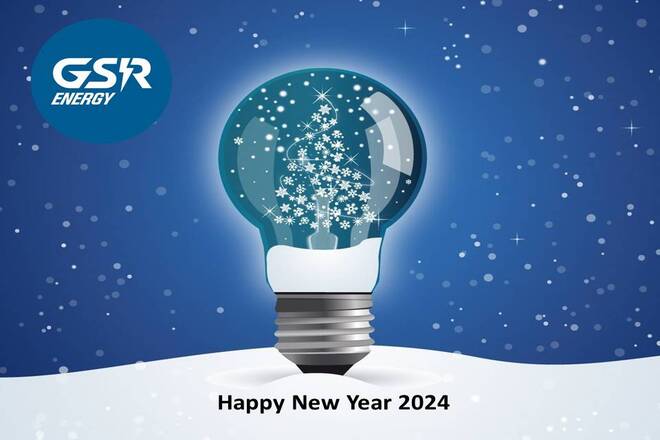Petersburg, alas, cannot yet boast of a large number of private projects in the energy sector – there are only two of them. The first is Yugo-Zapadnaya CHPP, started by a private investor but completed at the expense of the city budget. The second is a less well-known, but launched at the same time, project of the GSR Energo company – the construction of a new thermal power plant in Kolpino on the basis of the Izhora Plants boiler house. VICTOR KOTOV, Director General of GSR Energo, told RBC Daily’s ANDREY ZHUKOV about how a company that had never worked in the energy sector is implementing a CHPP project, whether it was difficult to agree on financing the project with Vnesheconombank, and what are the future plans for the development of the GSR.
— Why did GSR Energo decide to take on the power plant construction project?
– We bought a boiler house that used to belong to Izhora Plants, which are part of OMZ. In 2006, this asset was determined to be non-core and sold. Our idea of CHP modernization was born from the understanding that there is nothing more profitable than a heating plant. And of the technologies used, the most effective is the steam-gas cycle. In this case, the efficiency of gas combustion increases, which, passing through the turbine, continues to heat the boilers with exhaust gases. The result is both electricity and heat. Now we produce only heat.
Is the new station being built to replace the outdated one?
– Partly so, although the issue of reconstruction of the existing station is a separate project, and it will be implemented only after the completion of the new thermal power plant.
– In what condition did you get the boiler room?
– In a workable, but since the business for the previous owner was not a core business, then, naturally, he invested less money in the boiler room than in the main production. Another thing is that the inherent degree of reliability of the station was quite high. Here are boilers bought in the USA under Lend-Lease. They were ordered in October 1941 in the United States, that is, at the very beginning of the war. Delivery date was 1945, installation – in 1946. Despite the fact that the war was going on, the deadlines were met: the boilers were consistently delivered from 1946 and introduced in 1951. At the time of the purchase of the boiler house, the oldest of them was 56 years old. Now all 12 boilers are working, their reliability has been confirmed by several audits.
— Is there a demand for electricity in this area?
– Nearly the entire industry of the city is now being brought to the industrial site of the Kolpinsky district. The place here is very convenient, there is good logistics, near the ring road, Moscow highway, railway. In terms of the number of applications in terms of connection to electricity sources, this will be one of the largest industrial zones in St. Petersburg. Good engineering preparation of this territory allows industrialists to make decisions very quickly on the transfer of enterprises from the urban area here.
— Have you considered the industrial site’s need for electricity?
— Yes, about 145 MW are now connected. But in the near future it is planned to place Power Machines enterprises here. In addition, the enterprises of OAO Magnitogorsk Iron and Steel Works and Severstal operate and are constantly developing at the Izhora site. It is also planned to organize forging and pressing production, scrap metal processing. Therefore, we expect a significant increase in consumption and, accordingly, demand for capacity.
– And what about your connection to the power grid, the same question does not depend on you?
– We have concluded all agreements with FGC, power transmission lines are already under construction. The substation, which will receive the energy of the station, is located close enough. In addition, the construction of our thermal power plant successfully coincided with the need to unload the station.
What about gas supplies?
— Now, together with CJSC Gazprom Mezhregiongaz Saint Petersburg, we are participating in a program to remove infrastructure restrictions. Additionally, we are building two gas pipelines. In general, we will need twice as much gas as now, up to 550 million cubic meters. m per year. To resolve this issue with additional deliveries, we have to work with many services up to the Ministry of Economic Development. It is it that gives permission for the use of natural gas as a fuel. An additional limit is allocated within the framework of the citywide limit, which requires approval at the level of Gazprom’s top management.
Is your project unique or is it rather typical?
“In no case did we want to be pioneers and experience something new for ourselves. The machines that have been delivered belong to the most massive series. In our case, the difficulty is the need to build a station in a very compressed area. We have only 3.4 hectares here, and everything needs to be placed on this territory. In this sense, the project is unique.
What is the expected payback period for the project?
— For such projects, the normal payback period is about 10-15 years.
— When it is planned to launch the first block, why did you decide not to build two at once?
– When we entered the project and started counting, we came across two approaches: “Soviet engineering” and “financial-capitalist”. Engineering assumed the construction of a double unit, it is economical and immediately allows you to start up to 400 MW of new th power. In addition, you can count on synergy due to the simultaneous creation of two blocks at once. Engineers had two hands for such a project, but the financiers stopped it, arguing that the market is changing very quickly, the legislative framework too. In addition, banks do not yet know how to finance private capital for the long term. Therefore, we decided to build blocks sequentially one after the other. Of course, there are certain intersections in infrastructure in this case, but by and large the blocks are autonomous.
In September, we will start launching the station in test mode, the unit will be tested for three months under load in different modes. Then it is necessary to go through procedures related to acceptance, state expertise, etc. There is still a lot of work to be done related to registration with the Market Council, taking into account constantly changing rules.
— You are installing a French turbine manufactured by GE, why did you prefer a foreign unit?
– There is a graph of the dependence of the payback period of the station on the capacity – the most expensive and long-term payback are stations with low power – less than 30 MW. For us, taking into account the planned loads, the optimal zone is from 90 to 120 MW. However, Russian plants producing turbines do not operate in this range. Therefore, there was a variant with GE. By the way, our steam turbine, generator and boilers are Russian. All equipment of the first unit has already arrived at the site. It is symbolic that the serial number of our turbine ends with 078 (the code of St. Petersburg. – RBC daily).
– And how are things going with the second block?
— We booked a conveyor at the GE plant for turbine assembly. Now the issues related to the financing of construction are being resolved. The Macquarie Renaissance fund entered the company’s equity capital (its contribution amounted to $83 million — RBC daily). I believe that the arrival of such a serious investor is a confirmation of the viability of the project. As for the timing, we expect to launch the second block in 2014.
— Was it difficult to convince VEB (the bank provided GSR Energo with a loan of 4.9 billion rubles until 2024) to provide financing for the project?
— We were looking for a bank that would appreciate the idea of building a thermal power plant and the level of preparation of the team for its implementation. And VEB is a bank that is constantly looking for projects for financing. The bank evaluated not so much the hardware itself as the ability of the team to complete the project. So, in fact, the competence of the team, the ability to learn quickly, make decisions were tested. So first there was trust, and only then the decision on the possibility of financing was ripened. By the way, VEB carried out detailed, very complex work. The bank’s specialists helped us in many ways, suggesting several additional solutions.
— How did you form the team?
We were looking for people everywhere. Today – and, in fact, at all times – the success of projects is determined by the work of professionals. We employ specialists who have worked on foreign projects, both large and local. The team was formed from specialists who, in the status of a general contractor, built more than one station.
– What will happen after you start both blocks?
– We will start a project for the reconstruction of the existing boiler house. As practice shows, the design will take at least two years. Then the stage of preparation and examination will require another eight months. So there is still a lot of work to be done.
GSR Energo was founded in 2006 by the former co-owner of the Perekrestok network, Alexander Kosyanenko, together with a group of investors. On the basis of the Izhorskiye Zavody boiler house, the company plans to build a new CCGT CHPP designed for two units with a total capacity of 220 MW. The first block is planned to be launched early next year, the second – by 2014.
Read in full: http://www.rbcdaily.ru/2012/03/13/tek/562949983230021





